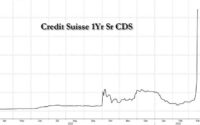Traders Say Asia Bond Rally Is Just Starting as Rate Hikes Peak
(Bloomberg) — Emerging Asia bonds have room to race ahead as central banks in the region look to have hit a rate-hike peak.
Most Read from Bloomberg
Regional securities delivered a 3.8% gain this quarter to dollar-based investors, their best performance since the final three months of 2020. The bonds have gotten a boost as price pressures in Asia abate and the Federal Reserve slows its pace of tightening.
“Recent downshifts in the size of rate hikes would support market expectations that hike cycles are nearing an end,” said Duncan Tan, a currency and rates strategist at DBS Group Holdings Ltd., referring to rate increases in emerging Asia. “Headline inflation has peaked for most of the region, but core inflation remains sticky in a few economies.”
The bumper returns may signal that the tide is starting to turn for developing Asian bonds after a torrid year marked by aggressive rate increases worldwide. But it remains to be seen if investors will go all in as major central banks such as the Fed and European Central Bank have warned that the battle against inflation isn’t over.
Here are three charts to show why emerging Asian securities are likely to notch up further gains.
1. Stepping Down
Central banks in the Philippines, South Korea and India opted for smaller rate increases at the latest reviews, citing growth concerns, a less hawkish Fed and easing price pressures.
Bank Indonesia is expected to follow suit, with economists surveyed by Bloomberg predicting that Governor Perry Warjiyo will deliver a quarter point hike on Thursday, after three successive 50-basis point increases.
2. Peaking Inflation
The shift to a slower pace of tightening comes as signs emerge that price pressures in the region may be approaching a peak. The latest headline inflation prints in Thailand, Indonesia and South Korea trailed economists’ estimates while India’s consumer-price growth has fallen back within the central bank’s 2%-6% target for the first time this year.
In addition, Indonesia’s core inflation has been undershooting economists’ forecasts for the past three months, and central bank Governor Warjiyo said Wednesday that the worst of the price pressures may be over.
3. Peak US Rates
The outlook for US interest rates and inflation is also providing support for developing Asian bonds. Consumer-price growth in the world’s largest economy has fallen from a four-decade high and bond traders expect it to cool further.
In addition, Fed Chair Jerome Powell hasn’t ruled out a shift to a quarter-point hike at the Fed’s February review, while signaling that borrowing costs will continue to climb. This has helped reduce the upward pressure on rate-sensitive two-year Treasury yields.
–With assistance from Nicholas Reynolds.
Most Read from Bloomberg Businessweek
©2022 Bloomberg L.P.
[ad_2]
Source link


